Having slipped away from the clutches of Vancouver’s winter wetness, I’ve spent the last few weeks making the most of the reliable days of sunshine one tends to take for granted in India. At home in Mercara, watching the house mutt baking herself in the late morning sun, heaving her drowsy self over with a satisfied grunt every now and then, I was very tempted to join her on the grass!
The winter months in Coorg are simply gorgeous. Azure skies, cool breezes and mellow sunshine. Did I say mellow? Actually, it’s easy to forget that at that elevation (4,000 ft above sea level) the sun can get very intense. If you’re not careful, you’ll find yourself light headed and dizzy, with a pounding headache from a little too much sun. Dress sensibly and wear a hat, and you can get your vitamin D fix without giving yourself sunstroke.
Speaking of vitamins, the markets were full of nellikai (Indian gooseberry), that wonder fruit, packed with more vitamins and virtue than you can shake a can of V8 at.
Like most grandmothers in Coorg, back in the day, my grandma made pickles with nellikai. Come gooseberry season, and large ceramic jars (baranis) full of brined fruit would be set out in the sun every morning. Naturally these were raided in the course of the day by gangs of grandchildren, looking for a handy thirst buster on the run! The real refresher though, was the juice my grandmother made from nellikai.
Amidst the jars of pickle basking in the sun outside her kitchen, she would set a couple of large bowls, standing them in shallow water baths to keep away the ants. These dishes held neatly scored gooseberries, mixed with coarse sugar crystals. She’d stir the contents gently a couple of times a day, just to be sure that the sugar was doing its work of drawing out the juices from the fruit, and dissolving nicely. Three or four days of this treatment was usually enough to extract and concentrate the juice. She would then strain the syrup and pour it into old brandy bottles that had been rinsed out and dried in that same happy patch of warmth!
It’s the simplest of recipes – just fruit, sugar and sunshine, to make a simple syrup that’s packed with flavour. Grandmother used the same technique to make wonderful concentrates from kaipuli and lime juice too. I managed to rouse myself from my place in the sun long enough to whip up a couple of batches. 🙂
Here’s how it’s done.
Grandma’s simple syrup
For nellikai juice
- Wash and dry your fruit.
- Gooseberries should be scored through to the seed, sectioned, and evenly sliced. It’s not essential to slice the fruit, but it does help speed up the process of maceration, especially with the larger variety of gooseberry. Removing the seeds also makes the straining process easier.The gooseberries will typically release most of their juice in the first two days.
- For every kilo of prepared fruit use 500gms of cane sugar.
- For kaipuli or lime juice, use 2/3 cup of sugar for every cup of juice.
- Pour into wide mouthed, non reactive dishes, stir to mix, then place in the sunniest spot in the garden.
- Cover with a food net, or muslin if there’s likely to be much dust about.
- Don’t forget the water bath!
- Stir a couple of times a day, just to be sure the sugar is thoroughly dissolved. And remember to bring the dishes in at night!
- After three days in the sun (or when the liquid level has reduced by about an inch), strain and bottle it.
Refrigerated, this syrup keeps well for up to two months.
To serve:
Pour about a tablespoonful of concentrate into a tall glass and top with cool water. Stir, taste, and let it carry you off to your place in the sun.
Nellikai and sunshine. A perfect match made in and around grandma’s kitchen.

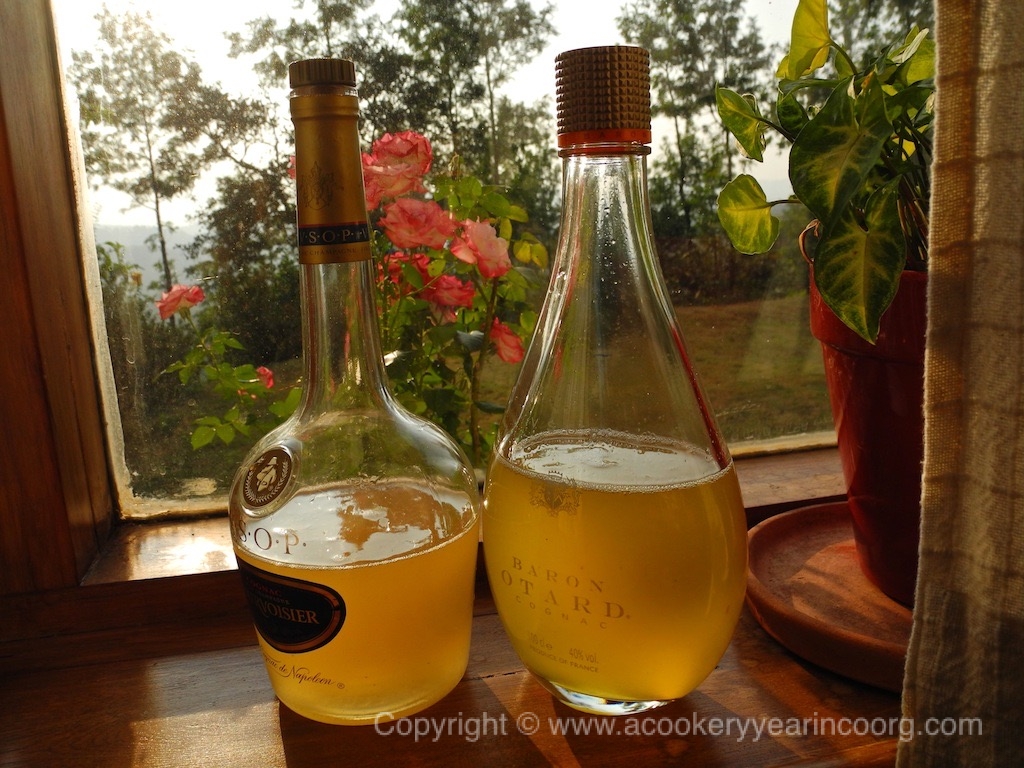
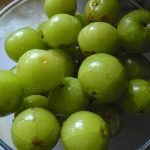
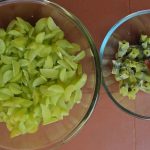
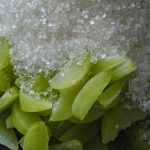
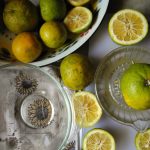
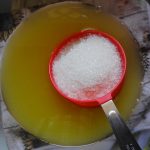
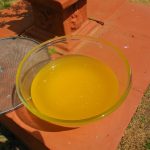
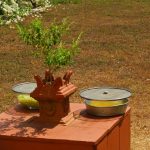
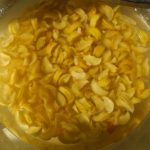
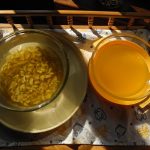
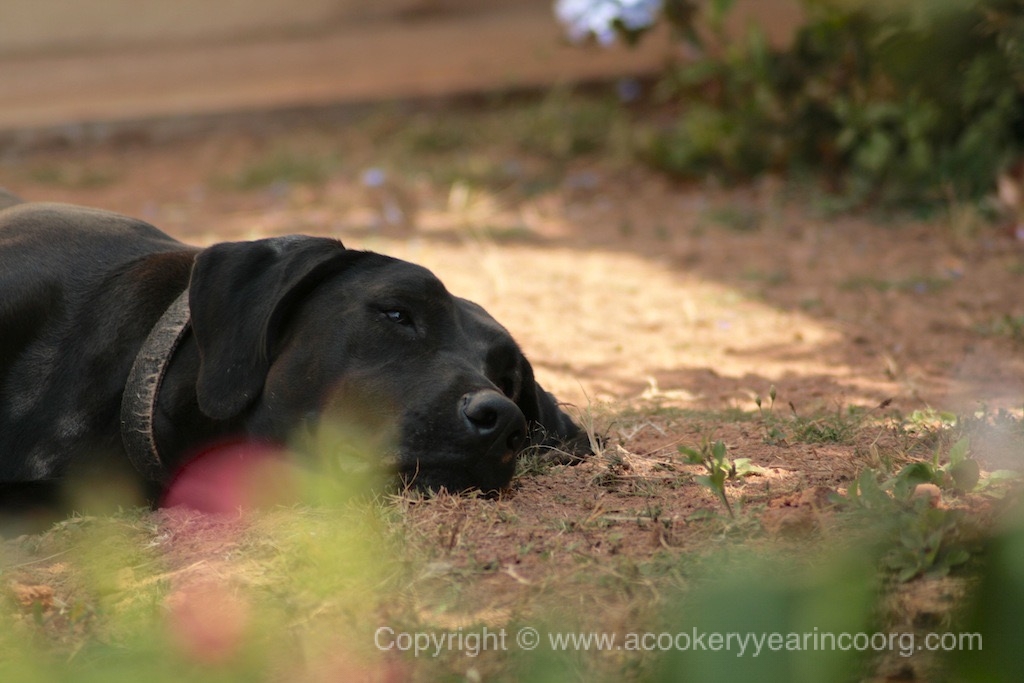
Shalini… Just one post every month… This is unfair… Keep writing more 🙂 🙂
We miss your post with those beautiful/Amazing photographs…. We are all following you – Be motivated 🙂 😛
Hello, Kodava_2 ,
Things have been rather slow here because I’ve been travelling, but I promise there’s plenty more in the pipeline!
Thank you for reading, and with such kind feedback, how can I not be motivated?! 🙂
Dear Shalini:
Sun-drying summer fruits near the holy basil plants! Brought back many fond memories. Your photographs are equally evocative as your writing.
Thank you, Ammini 🙂
The fruit just had to share the best spot in the garden! What with the latest “pineapple express” dumping rain on us,
I’ve been dreaming of this bottled sunshine, wishing I’d brought some back with me!
Dear Shalini, This post brought back fond childhood memories. I remember those school holidays, where we went Nellikai picking in the hills of our coffee estates, with kids from the labour lines(as we were not savvy enough to navigate ourselves in the estates), inspite of resistance from our mother. I remember coming home completely roasted in the scorching hot sun. Me being one of those rare species who disliked pickels, always made an exception to Nellikai pickel, we washed off the spices from the pickles and ate the tender Nellikai that was pickled for days….ah! the simple pleasure of life.
Thanks for grandmom’s Nellikai juice recipe, it is one of those miracle food that is brimming with nutrients, wish we could get them in abundance here. Keep up your awesome writing and it is definetely a special skill that you have in the way you take\choose your pictures on the posts. I can almost feel the warmth of the sunshine in those pictures.. what do we have to do get some of that sunshine here in this part of the world:)
Great Job, keep them coming and look forward to the next post.
Thank you so much, Vindhya. 🙂
I can just picture your childhood estate escapades, sound scolding after the fact included!
As a kid, I was absolutely in the “washed pickle” camp!! Even the ones I loved, like ambatté, I rinsed off and nibbled on at a snail’s pace. But, fresh or preserved, sweet or savoury, nellikai was always the most refreshing.
As for sunshine, looks like we will have to prove Birbal wrong, and draw warmth from impossibly distant sources! :-p
This is sunshine in a bottle sunkissed and happy . Incredible how the green gooseberries have turned into a yellow gold , it seems magical. I wonder how it would taste with a pinch of pepper and a teeny weeny bit of freshly grated ginger, and both being signature Coorg spices/ flavours ! Have had lemon juice made in the same way in the scorching heat of the summer up north. I have hazy memories of the lemon juice and sugar getting a touch of the sun in big glass jars and had a flavour different from the fresh one . The pictures are gorgeous , specially love the one of the sunflower patterned dishcloth peeking cheerfully from under the bowl.
Will you be sharing a recipe of the Nellakai pickle? Would love to try that . There is the Amla ka Murrabba , a spicy gooseberry conserve which my mother made every year and was heavenly, it was deep amber and pretty piquant .
Another great post , keep them coming Shalini , we are parched for them .
Thank you, Jyoti! 🙂
These “sun” juices are simply the best. I think because they’re not really heated, as in conventional squash making, the flavour stays amazingly fresh. And yet, it’s also very mellow, probably from all that sun bathing. 🙂
I love amla murabba, and when the gooseberry juice was done, I fished out those little crescents, thinking I’d get two for one by turning them into murabba. :-p No such luck- the sugar and sun had well and truly drawn out the best, and it was only fibre left! Next time, I’m going to try adding that ginger and pepper to my glass of nellikai juice.I imagine it would be like liquid murabba. Mmm…murabba!
I don’t have her recipe, but my grandma’s nellikai pickle was the standard Coorg no-oil one, with red chilli, mustard and fenugreek added to brined gooseberries. I will try and post a proper recipe soon.